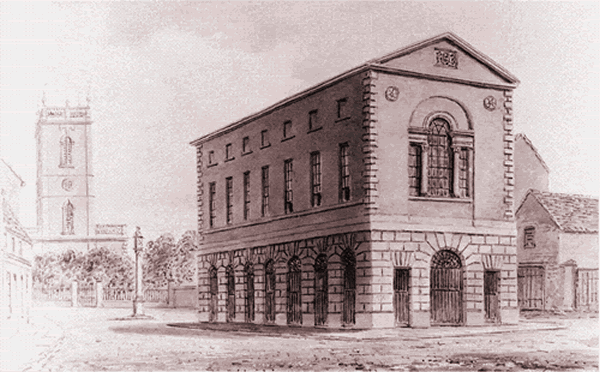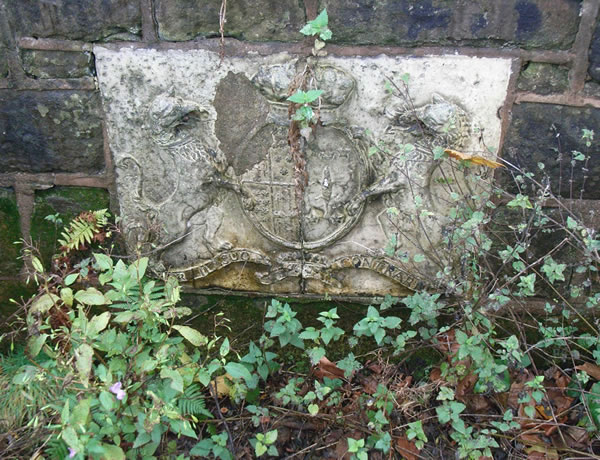Old Town Hall
A great hall, known in its early days as the ‘Leet Hall’, was built in the market place by Abbot Thomas Feld (1473-93) primarily as the meeting place of the manor court. The meeting room was on the first-floor and the ground floor was occupied by market traders. Sometime in the sixteenth century, it became known as the Town Hall. It was eventually demolished in 1770. I have not yet managed to obtain any form of image of it.

A replacement Town Hall was built in 1771-2 on the same market place site as the original medieval hall. It was paid for by Lord Paget, designed by local architect James Wyatt and his brother Joseph was involved with the building and masonary.
The hall had a very classic style with rusticated ground floor of seven bays, an upper chamber with a Venetian window at the west end, and in the pediment an entablature of the Paget family coat-of-arms made of Coade stone.
Internally there was a fire-place with a moulded chimney piece at the east end. It was fitted out for sessions of the manor court, and a copy of Sir Thomas Lawrence’s portrait of the first marquess of Anglesey later hung over the chimney piece.
The town hall was deemed unsuitable as offices for the town commissioners established in 1779, and by 1831 they met at the Angel Inn, which was still their meeting place in 1853. The commissioners appointed under the 1853 Act at first met in the county court house at the corner of Station Street and Guild Street, moving in 1858 to offices next to the clerk’s house in High Street. A proposal in 1866 to build a town hall with public meeting rooms on the site of the former gas works at the corner of Station Street and Union Street was rejected, evidently on financial grounds, and later the same year the commissioners moved into a new building at the corner of Horninglow Street and Guild Street.
The building was taken over by the municipal borough established in 1878 but was in poor state. The hall was demolished in 1883, the same year that the Market Hall was built and opened close by. In 1884, Thornewill and Warham Engineering were commissioned to construct a bridge from the memorial gardens to Andresey island. The carefully removed Paget arms tablet which can be seen at the top of the Town Hall was incorporated into the wall and can still be seen today hidden away, usually obscured by nettles, on the ‘library side’ of the Andresey bridge and is now beginning to fall apart. It really does deserve better!

The Anglesey portrait was damaged in its removal to the market hall and was lost. If you look closely in the market place, four brass corner plates are set into the block paving to mark out the footprint of the old Town Hall.

